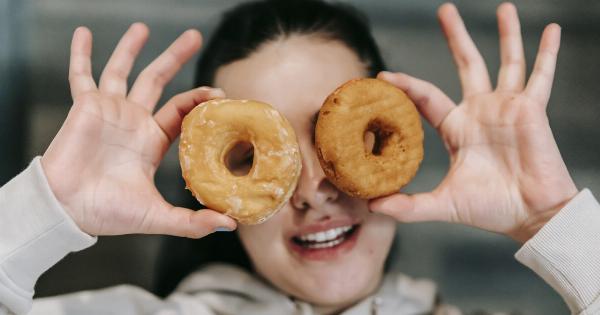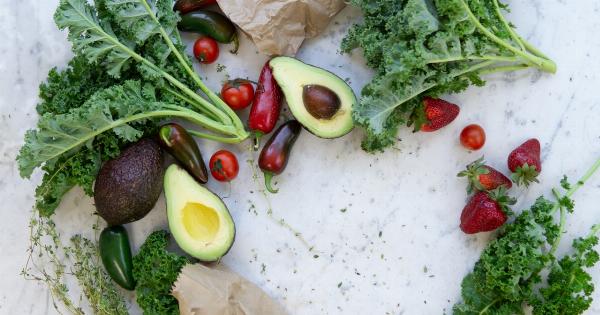It’s no secret that many of us struggle to maintain a healthy diet. We constantly hear about diets and lifestyle changes that promise quick and easy weight loss, but many of them are unhealthy and unsustainable.
One of the biggest obstacles to healthy eating is the ‘healthy’ food trap. Despite our best intentions, we can easily overeat on foods that we believe to be healthy. In this article, we’ll take a closer look at the ‘healthy’ food trap, and explore why we overeat.
What is the ‘Healthy’ Food Trap?
The ‘healthy’ food trap is a phenomenon in which we overeat on foods that we believe to be healthy. It’s a common scenario: you choose a salad over a burger at lunchtime, only to find that you’re starving by mid-afternoon.
You convince yourself that it’s ok to snack on a handful of nuts or a piece of fruit, but before you know it, you’ve consumed more calories than you would have with the burger.
The ‘healthy’ food trap is a result of a number of factors, including marketing, portion sizes, and the belief that healthy food is less filling and satisfying.
Marketing
Marketing plays a huge role in the ‘healthy’ food trap. Food companies are aware that consumers are looking for healthier options, and they often use marketing tactics to make their products seem healthier than they really are.
For example, a cereal may be marketed as ‘low-fat’ or ‘high-fiber’, but it may still be high in sugar and calories.
Portion Sizes
Portion sizes also contribute to the ‘healthy’ food trap. Many ‘healthy’ foods, such as nuts, seeds, and avocado, are high in calories.
However, because they are perceived as healthy, we often consume larger portion sizes than we would with less healthy foods. This can lead to overeating and weight gain.
The Belief that Healthy Food is Less Filling
Another factor in the ‘healthy’ food trap is the belief that healthy food is less filling and satisfying than less healthy options. This can lead to people eating more of the healthy food in an attempt to feel full, which can lead to overeating.
Why We Overeat on ‘Healthy’ Foods
So, why do we overeat on foods that we know are healthy? There are a number of reasons for this.
Cravings
One reason is cravings. Many ‘healthy’ foods, such as fruit, nuts, and seeds, are high in natural sugars and fats, which can trigger our cravings and lead to overeating.
This is especially true if we are used to consuming a diet high in processed foods, which are often high in sugar and fat.
Perceived Health Benefits
Another reason we overeat on ‘healthy’ foods is the perceived health benefits. We may believe that by eating more of a certain food, we will reap greater health benefits, which can lead us to overeat.
For example, we may consume large amounts of kale or spinach in an attempt to get more vitamins and minerals.
Misunderstanding Calories
Many people also misunderstand calories when it comes to ‘healthy’ foods. They may assume that just because a food is healthy, it contains fewer calories than a less healthy option. This can lead to overeating and weight gain.
How to Avoid the ‘Healthy’ Food Trap
So, how can you avoid falling into the ‘healthy’ food trap? Here are some tips:.
Read Labels Carefully
When choosing ‘healthy’ foods, be sure to read the labels carefully. Look for foods that are low in sugar, fat, and calories, and be wary of foods that are marketed as ‘low-fat’ or ‘low-sugar’, as they may be high in other unhealthy ingredients.
Pay Attention to Portion Sizes
Another important tip is to pay attention to portion sizes. Just because a food is healthy doesn’t mean you can eat as much as you want. Be sure to measure out portions, especially with calorie-dense foods like nuts and seeds.
Stay Balanced
It’s also important to stay balanced with your diet. Rather than focusing solely on ‘healthy’ foods, aim for a balanced diet that includes a variety of fruits, vegetables, whole grains, lean proteins, and healthy fats.
List of Effects
The ‘healthy’ food trap can have a number of negative effects on your health, including weight gain and nutritional deficiencies.
Overeating on ‘healthy’ foods can lead to weight gain, which can increase your risk of obesity, heart disease, and other health problems. Additionally, overeating on certain ‘healthy’ foods, such as nuts or avocados, can lead to nutritional deficiencies, as you may be consuming too much of one nutrient and not enough of others.
Conclusion
The ‘healthy’ food trap is a common problem that many of us face. By understanding the reasons why we overeat on ‘healthy’ foods, and by following some simple tips, we can avoid the trap and maintain a healthy and balanced diet.




























